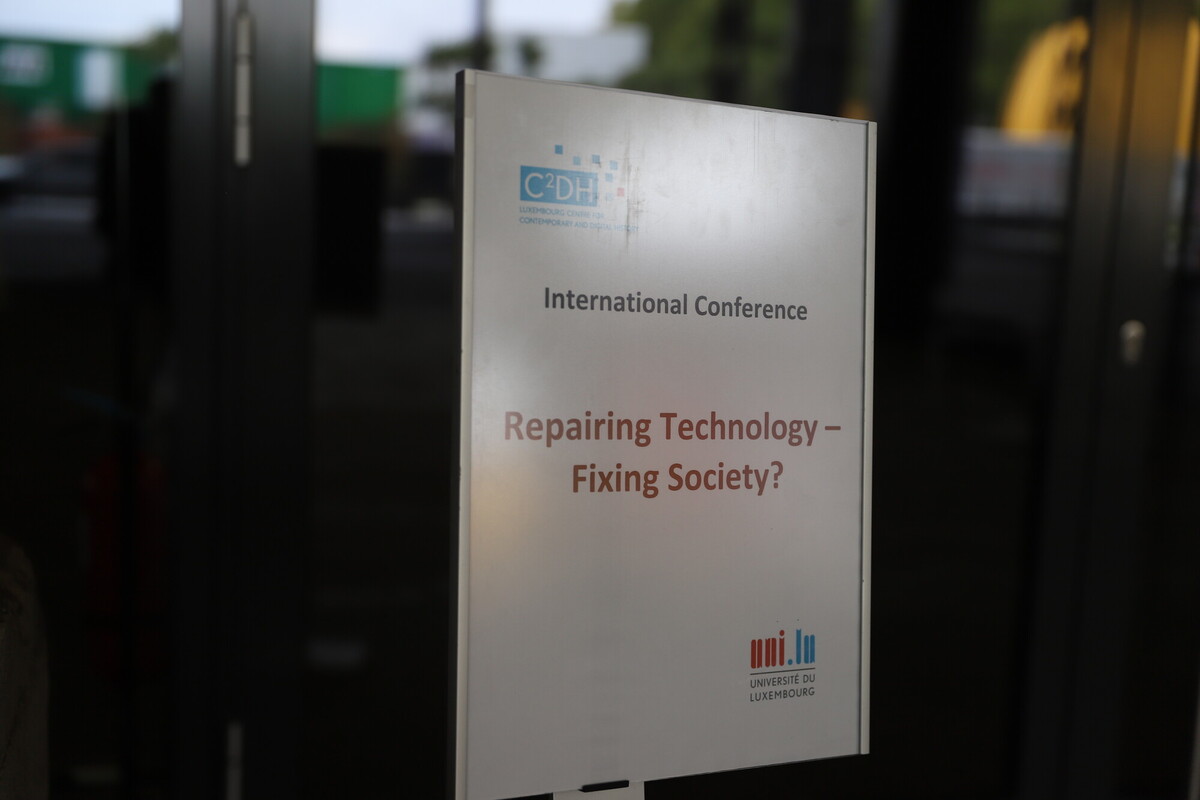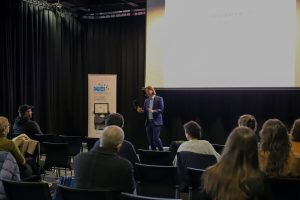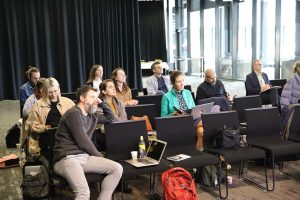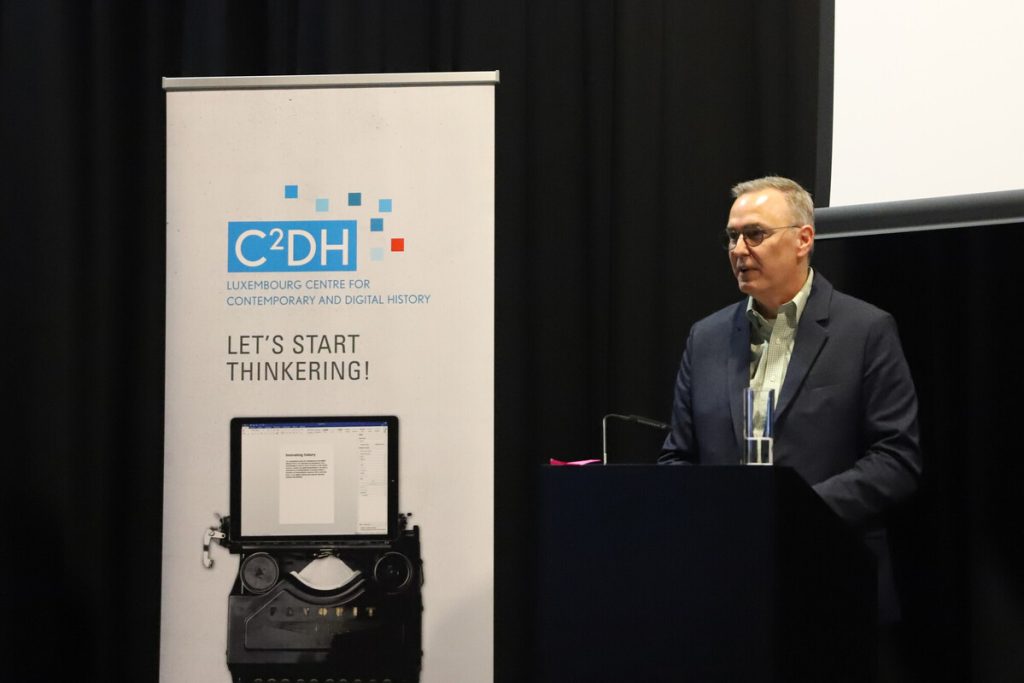Guest Author
This account is reserved for our Guest Authors and Collaborators.
MORE ABOUT THIS AUTHOR
The following text was written by Aude Barthe-Monié, PhD candidate at the Institut d’Histoire, Université de Neuchâtel, it is the report on the REPAIR closing conference “Repairing Technology – Fixing Society?”, that took part from 13-14 October 2022 in Luxemburg. The text was first published on H-Soz-Kult.
The history of technology, long focused on innovation and the introduction of new technologies, has recently started to turn its attention to the maintenance and repair of “technology-in-use” (David Edgerton). Ignored for a time by academics, repair also seems to be neglected by the contemporary capitalist economy, which is often accused of planning the obsolescence of consumer goods. The contributions at the “Repairing Technology – Fixing Society” international conference explored the evolution of repair practices in our societies from a global and interdisciplinary perspective. The conference brought together historians as well as sociologists, anthropologists and ethnographers. By means of different examples, participants were able to demonstrate the persistence of maintenance and repair in contemporary consumer societies. The two-day international conference was organised by the FNR-funded REPAIR project, which investigates the maintenance practices of the Luxembourg telephone network, continuity and change in local repair shops, and the role and influence of DIY cultures on repair practices.

Opening of the conference by Stefan Krebs
After a few words of introduction and welcome by the project leader STEFAN KREBS (Luxembourg), the opening panel of the conference looked at “Repairing Infrastructures”. The first presentation was entitled “Maintenance and Political Economy: Fixing Submarine Cables to Reinvent Transatlantic Capitalism”. JACOB WARD (Maastricht) spoke about submarine cable repair in the post-war era and the link between maintenance practices and the rise of a neoliberal international economy. In 1956, the first transoceanic submarine telephone cable, named TAT-1 (Transatlantic Telephone Cable System), was laid between Oban in Scotland and Clarenville in Canada. Ward demonstrated the importance of institutional collaboration in the repair of submarine cables and examined the political and economic impact of international communications after World War II.
In her talk “Communicating Smoothly: Maintaining the Luxembourg Telephone Network”, REBECCA MOSSOP (Luxembourg) applied a broad understanding of maintenance to investigate the development of the telephone system. After the telephone was introduced in 1885, demand for subscriber lines and telephone connections exceeded supply. The capacity of the system could therefore be seen as “defective” and in need of repair. Mossop introduced the notion of maintenance of capacity to describe the efforts made to overcome the shortage of telephone connections and switching stations.
In the third presentation, entitled “Repairing ‘Smart’ Infrastructures: Sustainability Orientations in Tension Between Infrastructuring Publics”, MADISON SNIDER (Seattle) discussed the “smart campus” concept, which is used to describe any initiatives designed to facilitate aspects of campus life. She highlighted the work of “cyber-physical” professions. Snider demonstrated the barriers between the management of data from smart technologies and the work required to maintain, repair and upkeep smart buildings, pointing to a lack of communication between the workers in charge of maintenance and repair and those who commission, design and provide new infrastructure for the institution.
In the last presentation of the panel, entitled “Iron Gates: The Study on the Maintenance of the Hydroelectric and Navigation System”, TIJANA RUPCIC (Vienna) spoke about the energy exploitation of the Iron Gates, a gorge on the Danube River separating Romania and Serbia. She proposed an analysis of the maintenance of one of the largest hydroelectric power plants in Europe, consisting of Iron Gates I and II. Among the problems she raised in her presentation were conflicts related to construction, with construction costs being financed by several countries; unforeseen accidents related to climatic hazards; and damage caused by unskilled workers. She also highlighted the importance of political interests in the construction, management and maintenance of large-scale infrastructures.

The second panel was entitled “Repair Ethnographies”. It began with a presentation by ANNA HARRIS (Maastricht) on “DIY and Innovation in Medicine: Ethnographic Experiments for the Study of Repair and Maintenance”. Through her work, Harris demonstrated the importance of people who test medical devices in advance of the classes taught at university hospitals. There is also much to be said for improvised materials and the “misuse” of objects in medical training. During the pandemic, researchers turned a diving mask into a respirator and surgical gloves were filled with a small amount of water to serve as hands. The often improvised solutions of the past helped overcome issues of scarcity.
In her presentation “Materializing thought: the production of research zines as a tool for studying repair and maintenance”, ANAÏS BLOCH (Geneva) described how she uses fanzines as a medium to carry out her research on repair and maintenance practices. Bloch’s work stands at the intersection of ethnography and design and involves interviews, archival research, hands-on experience and fieldwork, emphasising the visual representation of repair cultures. Her fanzines show visually that repair cultures are in constant flux and evolution. She has produced several fanzines on mobile phone repair workshops in Switzerland and in collaboration with the REPAIR project team at the C²DH.
CHRIS HESSELBEIN (Milano) then spoke about standardised high heels in his presentation entitled “Maintaining Shoes/Feet”. Hesselbein highlighted the problems linked to the standardisation of footwear, which can lead to social embarrassment, daily discomfort and physical deformities in the long term for users whose feet do not fit. These problems often prompt consumers to find technical tricks upstream so that they can wear shoes without snags. The various interviews conducted in New York highlighted the daily routines of women and their desire to adapt shoes to their feet, demonstrating that the work of adaptation and repair is also related to the body and objects.
The final panel presentation was by ÖDÜL BOZKURT (Sussex) on “Repair Work as Craft and Career: Insights from the Apprenticeship Journey in Classic Car Restoration”. Although cars are perceived as valuable items, repair work is generally considered “dirty” and undesirable. Through the journey of fourteen young apprentice repairers participating in a heritage car restoration programme in the UK, Bozkurt questioned the value of this work. The repair of classic cars retains a human and artisanal character that makes this work a “worthy pursuit” in the eyes of those who perform it and thus generates emotional satisfaction.

Keynote speaker Christopher Henke
The evening keynote was given by CHRISTOPHER HENKE (Hamilton, NY). In his talk entitled “Repair, Maintenance, and Infrastructure Studies: The Promise (and Perils?) of an Emerging Field”, he offered a reflection on repair studies, placing repair within the broader field of science and technology studies, sociology and the history of science and technology. Three points were developed: first, how repair and maintenance can be seen as a distinct form of knowledge, politics and epistemology; second, studies of repair and maintenance as a means of valuing the hidden work of repair and maintenance workers; and third, repair as a political project in itself, a project concerned with the rules of capitalism, consumer society, global inequality and the climate crisis as an interrelated set of urgent challenges and opportunities.
The first panel of the second day was entitled “Repairing Objects”. In his presentation “The Politics of Everyday Repair Opportunities”, THOMAS HOPPENHEIT (Luxembourg) chose to focus on Luxembourg in the 1960s and 1970s, at a time when it had become one of the most advanced European consumer societies. In this period many repair services disappeared, partly because of the availability of cheap disposable consumer products but also because of political and economic choices. Indeed, for many decades, politicians pushed small businesses to behave like industrial companies by adopting modern management and advertising practices, which was complicated for these small companies to achieve. Competition from mass production and globalisation put formerly dynamic and sometimes very successful family businesses (e.g. tailors and shoemakers) under pressure and in many cases out of business.
THOMAS SCHUETZ (Stuttgart) investigated the repairability of watches in a presentation entitled “Wasted Time / The Emergence of a Throwaway Culture Using the Example of Clocks and Watches”. Over the course of the 20th century, watches went from being valuable, rare and durable objects to disposable products. The watch industry has undergone a profound change since 1970, and the Swatch watch is a perfect example of this evolution: sold as a disposable product in a plastic case instead of a metal one, it required fewer repairs because it had fewer parts. This change in the structure of the industry led to a massive decline in the number of watchmakers, especially those trained in repair practices. However, Schuetz showed that plastic was not the sole reason for watches becoming disposable objects, since some clock designs using plastic continued to be repairable.
Finally, STEFAN KREBS closed this panel with his presentation entitled “On the (alleged) disappearance of repair since the 1970s”. Krebs used a range of statistics to show that repair did not decrease from 1970 to 1986 in Luxembourg, a period when the throw-away society seemed set to put repair out of business. Consumer spending on transportation and communication (including maintenance and repair costs) grew faster than spending on food, clothing and shoes (areas in which less was spent on repair). Therefore, repair did not disappear; instead it shifted to fewer but more expensive consumer objects like radios, television sets and automobiles. Furthermore, the emerging environmental movement emphasised the relevance of repair in our society. In the 1970s and 1980s, criticism of consumer society was already widespread and not limited to the realm of the fledgling environmental movement. Sustainability and repairability were promoted as important characteristics in countering rising waste production in modern consumer societies.
The last panel of the conference was entitled “Repairing Hard- and Software”. OLGA USACHOVA’s (Padova) presentation “The Broken World of Refugee Apps? Towards Sustainability of Mobile Applications” focused on mobile applications for refugees in Germany. Among the many objects studied by repair history, little attention has been given to digital technology. Refugee applications are designed to build networks of actors to facilitate the daily life of refugees and their inclusion into the host society. Usachova asked how useful these apps were and how software maintenance was organised. Using examples of applications such as “Ankommen” and “Mbeon”, she demonstrated that maintenance and repair practices are often underestimated and greatly disrupt the use of applications, forcing consumers to turn to other less specialised applications like social media and messengers.
ABDALLAH ZOUHAIRI (Casablanca) showed the importance of computer repairs during the COVID-19 crisis in Morocco. In his presentation “Repair and Democratization of Distance Learning During Covid-19”, he explained that during the pandemic school teaching was done at a distance, forcing parents and children to use computers. This imperative underlined the inequalities between rich and poor families, as the latter initially had no access to the necessary devices. Many turned to the purchase of second-hand equipment, which also experienced a boom in activity during this period. This revival in the repair of old computers has helped to reduce economic inequalities among families, allowing everyone to own a computer and promoting education for all.
MATTHIAS HEYMANN (Aarhus) gave a presentation entitled “Maintenance and Repair as Innovation? Software Systems and the Case of Climate” in which he explored the maintenance of scientific software such as climate models. These play a major role in the response to the climate crisis, especially since they are used by scientists and climatologists to understand climate disruption. He argued that scientific software such as climate models needs a lot of adaptations and corrections, hence the importance of maintenance and repair. However, most people involved in such software avoid calling these practices maintenance or repair as such terms could destroy trust in these models.
The conference closed with a presentation by GINEVRA SANVITALE (Eindhoven) entitled “Project ATENA: Born to be Outmoded. Emotions and the Technopolitical Construction of Obsolescence in the History of Computing”. In her paper, Sanvitale distinguished between involuntary, planned, forced and anticipated obsolescence. Her aim was to demonstrate that obsolescence is not only imposed by design choices; it is also enabled by political decisions. The ATENA project, a partnership between IBM and the Italian government to digitise national tax records (from 1960 to 1970), became unintentionally obsolete as a result of conflicting political decisions taken by successive governments.
By combining different disciplinary approaches (sociology, anthropology, history) and research on materiality (infrastructures and objects) and immateriality (software), the speakers demonstrated the importance of maintenance and repair in the history of technology and beyond. The contributions at this two-day conference offered fertile ground for new research, at a time when the question of repair is central to current environmental and economic concerns.